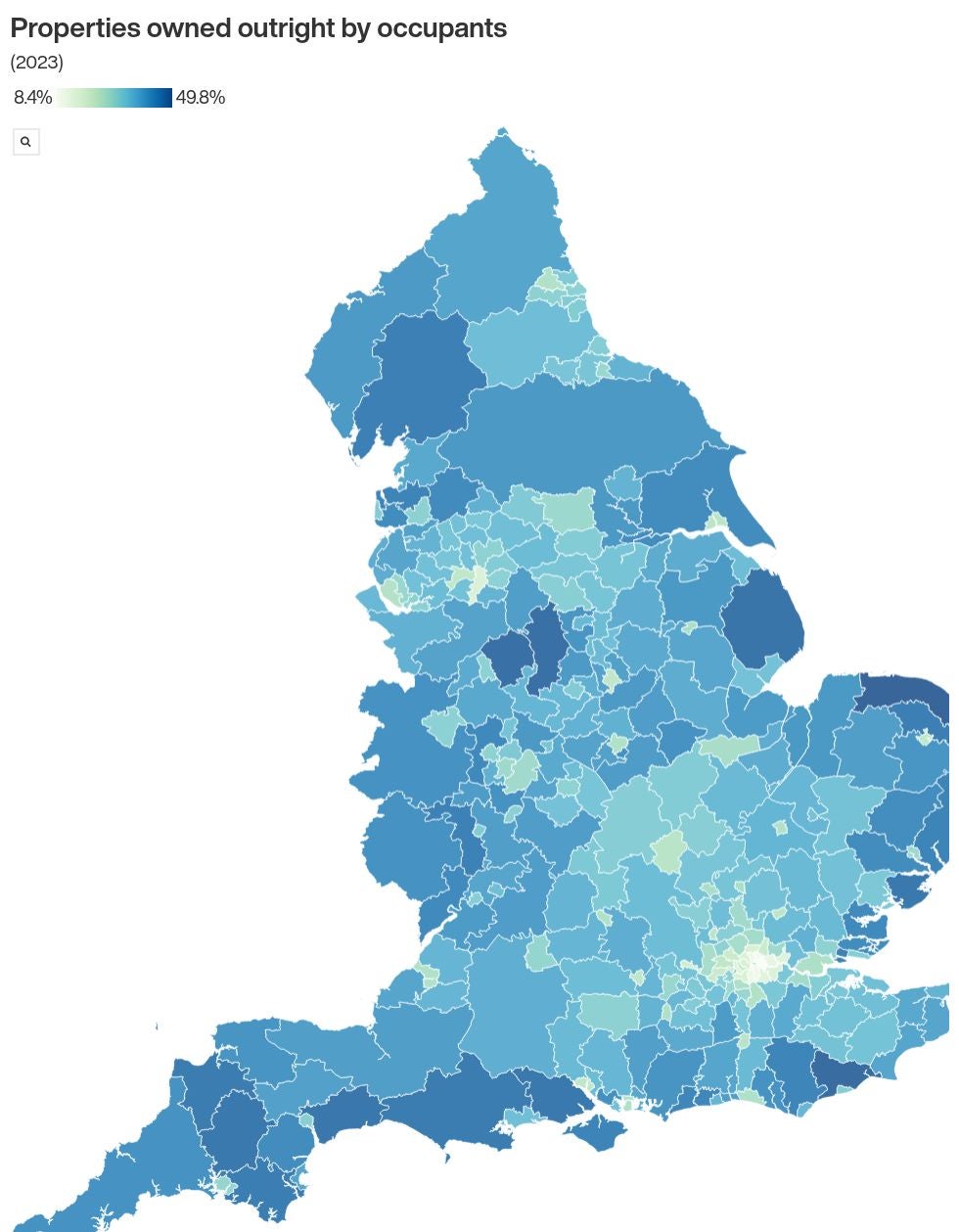The area with highest proportion of homeowners in the UK has been revealed in newly-released figures.
Nearly half of properties in North Norfolk are owned outright by their occupants, a higher proportion than any other local authority in England.
The thin strip of East Anglia coastline, which includes the seaside towns of Cromer and Sheringham, has for several years been the area of England with the largest percentage of population aged 65 and over.
The data has been published by the Office for National Statistics (ONS) as part of its latest estimates of household tenure, which also includes figures for accommodation that is rented or owned with a mortgage or loan.
North Norfolk tops the list for the highest percentage of properties owned outright by occupants (49.8 per cent), followed by Rother in East Sussex (48.7 per cent), Staffordshire Moorlands (48.2 per cent), Derbyshire Dales (48.2 per cent) and East Lindsey in Lincolnshire (47.4 per cent).
Three of these five – North Norfolk, Rother and East Lindsey – are also the local authorities where people aged 65 and over account for the largest share of the population.
The areas with the greatest proportion of homes owned outright by occupants tend to be in coastal regions or away from cities, the ONS said.

The top five with the lowest percentage of outright ownership are all in London: Tower Hamlets (8.4 per cent), Hackney (10.0 per cent), Southwark (10.8 per cent), Islington (11.8 per cent) and Lambeth (12.1 per cent).
However, the trend is reversed for properties that are privately rented.
Here the top five areas with the highest proportion are all in the capital: City of London (51.8 per cent), Westminster (47.9 per cent), Kensington & Chelsea (42.8 per cent), Newham (41.1 per cent) and Tower Hamlets (41.0 per cent).
Get a free fractional share worth up to £100.
Capital at risk.
Terms and conditions apply.
Go to website
ADVERTISEMENT
Get a free fractional share worth up to £100.
Capital at risk.
Terms and conditions apply.
Go to website
ADVERTISEMENT
The bottom five are outside cities and away from heavily built-up areas: North East Derbyshire (10.3 per cent), South Staffordshire (10.6 per cent), Rochford in Essex (10.6 per cent), Bromsgrove in Worcestershire (10.7 per cent) and Maldon in Essex (11.7 per cent).
The ONS figures are for 2023 and suggest there were a total of 23.7 million households in England living in 25.4 million dwellings.
.jpeg)
Of this total, 8.3 million dwellings (32.6 per cent) were owned outright, 7.6 million (29.8 per cent) were owned with a mortgage or a loan, 5.3 million (20.8 per cent) were privately rented and 4.2 million (16.7 per cent) were socially rented, mainly from housing associations and local authorities.
Wokingham in Berkshire has the highest proportion of properties owned with a mortgage or loan (42.3 per cent), followed by Dartford in Kent (41.4 per cent), Hart in Hampshire (39.5 per cent), Bracknell Forest in Berkshire (39.4 per cent) and Reigate & Banstead in Surrey (39.0 per cent).
The areas with the lowest proportion are again all in London: Westminster (13.3 per cent), Kensington & Chelsea (13.8 per cent), Camden (14.9 per cent), City of London (15.1 per cent) and Islington (17.1 per cent).
For properties that are socially rented, the top five areas are in the capital: Islington (38.9 per cent), Southwark (38.5 per cent), Hackney (38.5 per cent), Lambeth (33.4 per cent) and Camden (31.7 per cent).
The bottom five are Castle Point in Essex (5.3 per cent), Wokingham (7.1 per cent), Medway in Kent (7.3 per cent), Wyre in Lancashire (7.6 per cent) and Ribble Valley in Lancashire (7.8 per cent).






